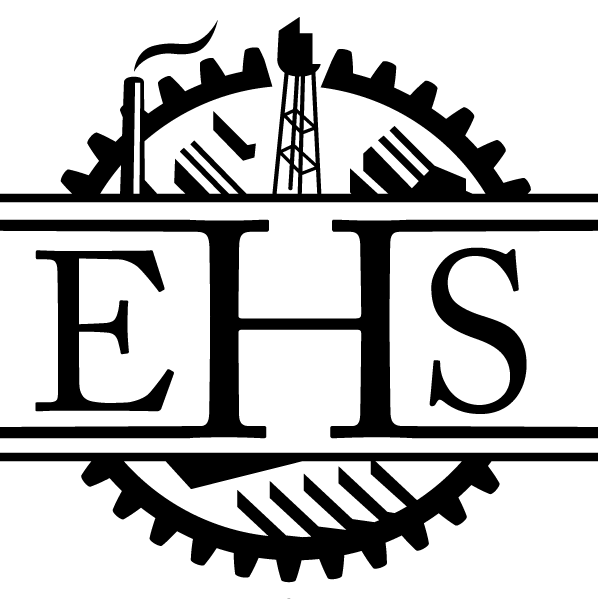
Chiron Legorreta Building & PCR Park
The striking Legorreta architects designed building is the youngest on the City of Emeryville’s “significant structures” list that provides a layer of protections from demolition. The structure was initially built as the headquarters for pioneering Biotech firm Chiron who occupied it from 1998-2006.
In the wake of the closure of Shell’s Emeryville Research Center who departed for Houston in 1972, the massive footprint lay fallow and needed to be put back to active use. The nascent “Biotech” industry proved to be transformative for Emeryville … and humanity.
Shell sold their 22.5 acre property in 1973 to East Bay industrial developer W. K. Van Bokkelen and two associates. Their plans were to build a small industrial park and office complex on the site. The site contained a whopping 200,000 square feet of warehouse space and 300,000 square feet of office space.

In 1982, the Cetus Corporation purchased 13 acres of the site. They constructed a 16,500 square foot production facility followed by an additional 4.7 acres for laboratory and administrative uses.
Founded in Berkeley in 1971, Cetus rapidly grew into the largest genetic engineering company in the region. Cetus was primarily focused on improving antibiotics but also looking to enter the growing field of DNA research.

City of Berkeley public officials, based on public fears of the emerging and misunderstood technology, began looking to regulate DNA Research of companies within the city. Companies like Cetus were hesitant with these regulations as they considered some of the information required by these laws to be proprietary.
This proved to be pivotal for Emeryville as Cetus and other companies in the field began looking across the border where the threat of these regulations was less pervasive.
They continued their rapid expansion into Emeryville during this time.

In 1981 at their Emeryville facility, Cetus developed a new and cheaper way of producing interferon, a substance with the potential for fighting cancer.
This potential helped Cetus raise $108 million in an initial public offering making it the largest IPO to that date.

But Cetus’ biggest scientific achievement was likely the technique of polymerase chain reaction DNA amplification, or “PCR,” that was conceived by famed biochemist Kary Mullis. The technique has been widely used in DNA research, forensics, and genetic disease diagnostics.
Mullis received the Nobel Prize in 1993, the only one awarded for research performed at a biotechnology company. Mullis passed in 2019 at the age of 74.

In the early 1980s, Cetus turned their efforts to a promising treatment for renal cancer. Unfortunately, the trials showed significant side-effects and it was denied FDA approval.
This delay caused a funding crisis for the company putting them in financial distress. They merged with neighboring Chiron in 1992 retaining Chiron’s name.

Following the merger, Chiron continued its innovation and expansion. Perhaps their greatest discovery over this period was a genetically engineered vaccine against hepatitis B.
In 1993, they commissioned famed Mexican architect Ricardo Legorreta to design their new biotechnology research center.
Legorreta’s concept for the campus was inspired by a monastery or small village of science. The design contained a series of atriums, patios, plazas and interconnected open spaces. Two entrance pavilions tastefully blended forms, colors, texture and natural light.

The design was well received by local architecture critics with the SF Chronicle’s John King calling it “imposing and uplifting all at once.”
Included in Chiron’s expansion was the private “PCR Park” with a plaque acknowledging the discovery of the technique here in Emeryville.

In 2003, the Chiron campus was the site of a domestic terrorist attack involving two bombs that were detonated. The suspect in the incident, Daniel Andreas San Diego, was a member of a radical animal-rights liberation group. He evaded authorities until finally being captured in North Wales in 2024.
At Chiron’s peak, they had offices and facilities in eighteen countries on five continents.
Swiss pharmaceutical giant Novartis acquired Chiron in 2006 for $5.1 Billion. They sold their blood transfusion diagnostics unit to Spanish-owned Grifols and their vaccines unit to British-owned GlaxoSmithKline.
The vast Chiron campus was split between Grifols and Novartis.
Grifols’ Emeryville campus focused on immunodiagnostic manufacturing operations. Novartis used their Emeryville campus for R&D for antibacterial and antiviral treatments like tropical diseases.
In 2019, Novartis abruptly sold their portion of the campus to BioMed Realty for $135 million.
The San Diego-based developer set about modernizing and expanding the campus, branding it as “Emery Yards.”

The still under-development project is approved for 1.3 million square feet of office and lab space spread out over six buildings. When complete, it will include 35,000 sq. ft. of amenities and 4 acres of green-space, a parking tower, and a cafe.
The public plaza adjacent to the Legoretta Building is appropriately named “Chiron Plaza.”





